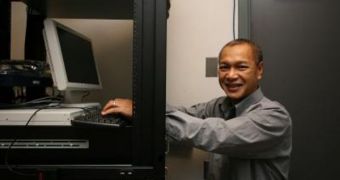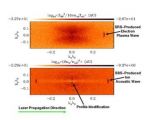When the Cold War began, the United States and the Russian Federation started stocking up nuclear armament in immense quantities. After it became clear that the two superpowers would not go to war, efforts were made to limit the production of these terrible weapons, and to reduce existing stocks. But the remaining nuclear warheads, some 40 to 50 years old, pose a new type of security threat to those handling them, so the US government is currently turning to scientists to get their expertise on how to go about managing these bombs.
The main goal is to estimate the longevity of the remaining weapons, and also to get a better understanding of how the physics of thermonuclear reactions work. Test-explosions underground are forbidden by law, and no such facilities are known to exist today. Therefore, the government needs to look for expertise in the civilian sectors. One of the scientists that is involved in these efforts is Hoanh Vu. He is a University of California in San Diego (UCSD) Jacobs School of Engineering Electrical and Computer Engineering Department research scientist.
Vu is part of a team that includes researchers from the Los Alamos National Laboratory (LALN), the Lodestar Research Corporation, and the University of Rochester in New York (URNY) Laboratory for Laser Energetics. The experts are currently working under a three-year, $510,000 grant from the US National Nuclear Security Administration (NNSA). They are using advanced computer simulations to model nuclear ignition reactions in the laboratory, in controlled, miniaturized conditions.
“The way nuclear weapons work is that there is a spherical core of deuterium-tritium that is driven by a radiation source to nuclear ignition; we know that these bombs work because they have worked underground,” Vu explains.
“But the nuclear materials inside these fuel cores, primarily deuterium-tritium, and the radiation sources that drive these cores to nuclear ignition, have a relatively short shelf life. We don't know with any certainty if these weapons still work. Since we can't test them on a full scale, what do we do? We actually look at the physics and scale down the problem so we can test the viability of these weapons in a safer and more controlled environment.”
“NNSA is committed to funding research that will increase the safety, security and reliability of our nuclear stockpile and further President Obama's commitment to securing nuclear material around the world. These grant recipients are working on cutting-edge research that is the bedrock of our future as a nuclear security enterprise. The money we invest today will advance scientific and national security goals, and I want to personally congratulate the recipients of these awards for their involvement in our mission,” the NNSA Administrator, Thomas D'Agostino, concludes.

 14 DAY TRIAL //
14 DAY TRIAL // 
